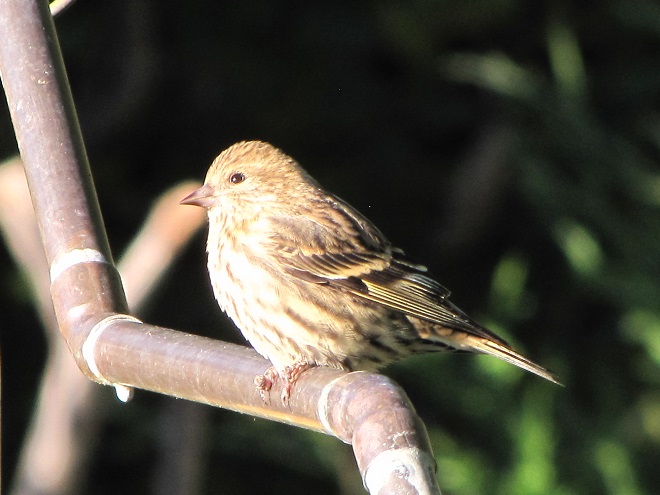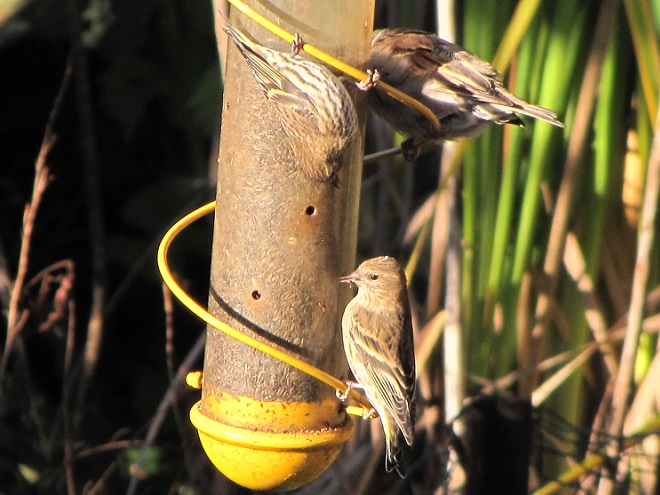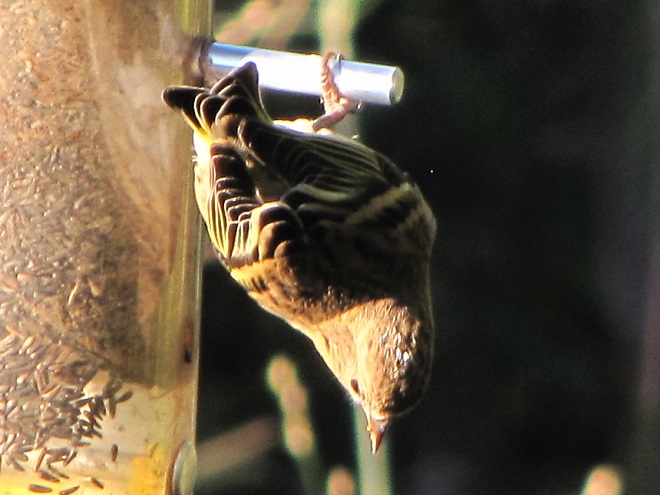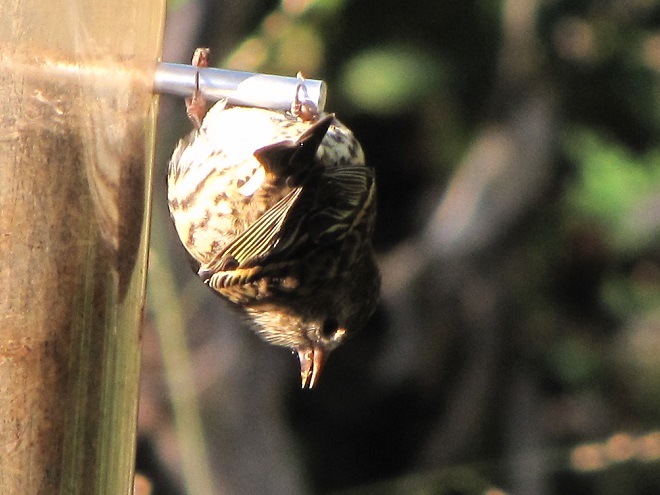When wild food crops such as pine cones, acorns, berries, and other tree seeds fail in the forests of Canada, bird species which may have otherwise remained north of the eastern United States for winter pay us a visit. There was a hint that such an event would occur this year when Red-breasted Nuthatches (Sitta canadensis) became widespread throughout the Mid-Atlantic States beginning in August. Then there were big flights of Blue Jays in recent weeks, an indication that the oaks of the northern wood are producing a less than optimal mast crop.
Reports of Pine Siskins (Spinus pinus), songbirds very similar in shape and size to the familiar American Goldfinch, have been posted from hawk watch sites throughout the region for several weeks now. During the last several days though, the numbers have increased to indicate that an invasion is underway. Just yesterday, nearly two thousand were seen from the lookout in Cape May Point, New Jersey. Just after sunrise this morning, between twenty and thirty Pine Siskins descended upon the hemlocks at the susquehannawildlife.net headquarters. There, they began feeding on the abundant cone crop—then they quickly discovered the accommodations offered by the bird bath and feeders.





